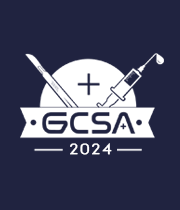Title : Current management of hemorrhagic shock, including titrated-to-response anesthesia and approach to exsanguination
Abstract:
Hemorrhagic shock (HS) management is based on a timely, rapid, definitive source control of bleeding/s and on blood loss replacement. Stopping the hemorrhage from progressing from any named and visible vessel is the main stem fundamental praxis of efficacy and effectiveness and an essential, obligatory, life-saving step. Blood loss replacement serves the purpose of preventing ischemia/reperfusion toxemia and optimizing tissue oxygenation and microcirculation dynamics. The “physiological classification of HS” dictates the timely management and suits the ‘titrated hypotensive resuscitation’ tactics and the ‘damage control surgery’ strategy. In any hypotensive but not yet critical shock, the body’s response to a fluid load test is the diriment cut-off information between compensation and progression, between the time for adopting conservative treatment and preparing for surgery or rushing to the theater for rapid bleeding source control. Up to 20% of the total blood volume is to be given stat to refill the unstressed venous return volume. In any critical level of shock where, ab initio, the patient manifests signs indicating critical physiology of imminent/impending cardiac arrest (CA), the balance between the life-saving reflexes stretched to the maximum and the insufficient distal perfusion (blood, oxygen, and substrates) remains in a liable and delicate equilibrium, susceptible to any minimal change or interfering variable. In a cardiac arrest by exsanguination, the core of the physiological issue remains the rapid restoration of a sufficient venous return, allowing the heart to pump it back into systemic circulation either by open massage via sternotomy or anterolateral thoracotomy, or spontaneously after aorta clamping in the chest or in the abdomen. Extracorporeal resuscitation and induced hypothermia are used as last ditch. The ‘physiology approach’ is a tailored approach with ‘titrated general anesthesia’ and ‘damage control surgery’ strategies to be applied in i) selected cases of “hypotensive progressive unstable shock” and ii) “critical shock with imminent/impending CA”. DCS, moreover, is obviously obligatory in iii) surgical resuscitation of “CA by exsanguination” in act. In any case, any hypotensive progressing or critical shock with imminent or impending CA, or when CA by exsanguination in act, direct source control via laparotomy/thoracotomy, with concomitant or soon following venous and diastolic refilling, are the two essential initial life-saving steps. This is the only way to prevent an irreversible ischemic damage to brain and heart. This is accomplishable rapidly and efficiently only by a direct ingress for source control, which is a crush laparotomy if the bleeding is coming from an abdominal +/- lower limb site, and rapid sternotomy/anterolateral thoracotomy if the bleeding is coming from a chest +/- upper limbs site. ECLS under sternotomy and direct vision is the final war plan. Without first stopping the bleeding and refilling the heart, any resuscitation of advanced progressive HS is an exercise doomed to failure.



